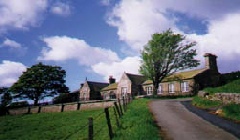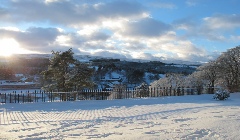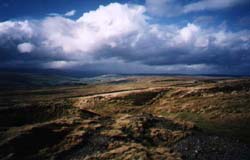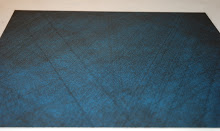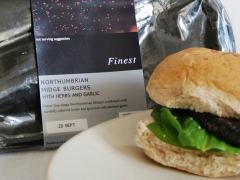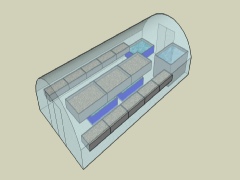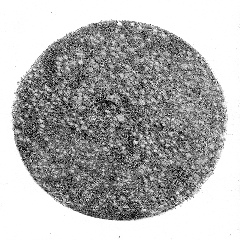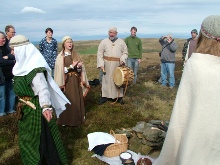Matt started out as an artists and is now working as a Curator for, Exeter Phoenix. Throughout the duration of the lecture he talks about his Journey to where he is today. Within the Exeter Phoenix he has several gallery spaces, and emphasises that it is not at art center, as he feels that hold the wrong connotations. It is a multi-platform arts venue.
The main exhibition space, holds contemporary art, which is selected and curated by himself. Currently showing, Kit Poulson: After the Enlightenment.
The Cafe bar gallery , is a platform for mainly regionally based artists, usually 2d work as it has to be put up on the walls. This space has a lot of viewers especially. He uses the example of the current show by Robert Mason, who’s pieces are illustrative paintings.
The Walkway Gallery, shows works form projects of exhibitions from the community. He examples of exhibitions by The Artful Dodgers, Alphington Photo, and Type Senstive.
Gallery 333, a small installation space, Liz West‘s installation is currently in this space.
Matt began his career when he studied Fine Art in Bristol Polytechnic, which is now known as Bristol University West of England (UWE), this was for the duration of 3 years, he then stayed for a bit before moving to London. He really didn’t know what he was going to do and he ended up in Hackney, he met people int he art industry and began transporting art around. He felt it important ot let us know he didn’t become a Curator through previous studies.
He expresses how London has a massive art industry, having multiple companies who work with art, artists and galleries. He began by working for 01 Art Services, London. To which 3 times a week he would pick up and move pieces of work around London, while he lived in Bow. he see’s this experience as an amazing education; going from art studios to collect paintings to moving them to the high end of London, to peoples houses who brought paintings and often installing them on top of a fireplace. This gave him opportunities to work with Canary Wolf and Virgin for example he would regularly change the art pieces round on the upper class sections of the plane. He also did some work for Frieze.
He saw the entire gamut of how industry works; almost a sense of behind the scenes. He continued to widen his knowledge with these experiences for 3 to 4 years. In other ways his practice suffered as he lacked the confidence to show other people his work, so he found himself often sat in his studio smoking rolley’s.
Hw was introduced to Alex Hartley, who needed an assistant. He helped to build the boxes for Hartley as an artists assistant and then was introduced to the Victoria Miro commercial gallery, where he began helping to install exhibitions. This role developed into Exhibition Organiser. wOrking closely with artists about how to achieve exhibitions through budgets and perimeters. He talked about the pleasure he received of getting to ‘live’ with these paintings; having longer relationships with the art works as he got to see them everyday. Working at Victoria Miro changed his opinion of painting and has a massive effect on him.
He mentioned various artists and projects he had done whilst working at Victoria Miro, for instance he speaks about how Grayson Perry was probably the most level headed artists he had ever worked with and Chris Ofili’s, The Upper Room, 1999-2002 now belongs to the Tate, but he got to work with the architect to design the space alongside Chris and how it was an intense installation, but with amazing results.
He also did some freelance work at Space X, an independent public contemporary art space in Exeter. Alongside Carolinne Maudsley, from Plymouth Arts Center as project managers. This was a step away form ‘the drilling holes’ to working with artists in the public sector. The lovely thing about this is it’s all about the art, not about buying into ‘the Bohemian-ness’ of the art world. It brings the aesthetic of the exhibition making into it. He explains how Commercial galleries work like Record Labels. They represent artists, work as managers/ promoters and producers for the artists. He mentioned how he gets a lot of people contacting the Phoenix asking if they can get in contact with the artists directly, as they don’t want to give the Phoenix any money for the work through commission. People forget how much the galleries do to pit art in front of people. As an artist it is important to remember all the aspects that galleries do for you.
It is also important to look at the relationships with Clients, for example when buying a painting you have to think about whether the client will lend the work to galleries for exhibitions (will the work ever be seen again). Museums often pay less for works, but it is better for the artists Career when works, or collections are brought by Museums.
It was while he was working at Space X, he began working part time as the Phoenix, he wanted to make the programme clearer at the Phoenix, as various people were coming in to hire the space. Matt brings clarity and continuity to the programme whilst raising the profile of the space regionally. the Phoenix only recently were granted more money for the role Matt does.
He talked about he shows Regional artists, international based artists, emerging artists, stablished artists work within the open exhibition spaces on the ground floor. The Phoenix is an interesting yet challenging space for him to run the contemporary programme with over 350, 000 visitors a year. There are various things he would love to do, that wouldn’t be appropriate, due to managing family audiences and to bear in mind the space being very tactile to visitors. With a lot of his exhibitions he lives to have the artists make works for solo exhibitions. This gives him more of a creative input of putting together a show. Giving Matt the feeling that he is slightly responsible for the making of work within the art world. This is a satisfying relationship with the artists in his terms.
He spoke about his show Nexus, where he invited 5 artists from Exeter. Raised awareness of local artists. Also his excitement of Owen Lloyd’s: Building Materials, 2010. To explain the importance of thinking whether of not you want something to be given away form an exhibition, for example Owen used tube lines to make maps of his work int he building. Matt explains how he aims to have a shop/archive of work that has been shown through these means.
Exeter Contemporary Open, Selects 9- 14 artists who can show up to 4 artworks. Matt is on the panel for this. He used the example of Bryony Gillard’s: Risk Assessment. Came from two photographs from her grandmas handbag, in a foreign location, with a tiger. Focusing on the bravery of being with wild animal. People like the idea of being brave with wild animals. This work was originally proposed for London hackney, but an hour before said snake can’t come. Matt found hippy woman in Devon and managed to get the piece cleared to do in Exeter Phoenix.
Projects outside, have lack of finances and time, however Matt has a small pot of money available to him, to create some work within the public realm. Due to not having much time to organise, he worked with artist with print. Reproducing work that didn’t cost time and money. He booked bus shelters showing Theo Simpson prints, Lesser Known Architecture. A series of architecture forms that no one knows much about. There was emphasis on no branding; Unlike adverts. This caused problems with funders wanting logos, he created a piece of print with fold out posters to see where they where. Also creating a Twitter based competition, in which you take a photo of the print in its place and what you thought about it to win a print.
There was a real emphasis on the networking throughout his lecture, inspiring in some ways as I feel I am currently trying to expand my network. It was nice to see that Matt had recognised me from when I had helped out at the Exeter Phoenix with the installation of LOW PROFILE: Against All Odds,
as that opportunity allowed me to widen my network and have an understanding of how another different gallery works. Matt’s talk really puts into perspective how much work you have to do to have a greater understanding of the art world and how it run, then applying this to what you want to do with your career. Yet, he also spoke a lot about how great it is when you get it right, and yourselves and the artists and thoroughly pleased with an exhibition.


